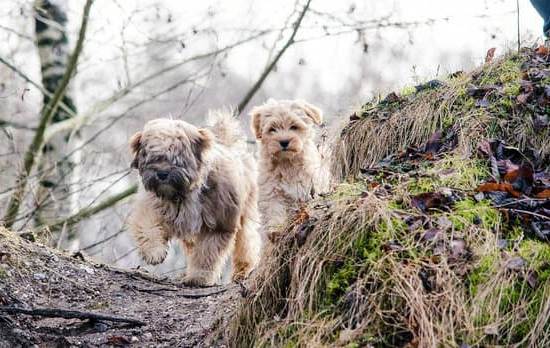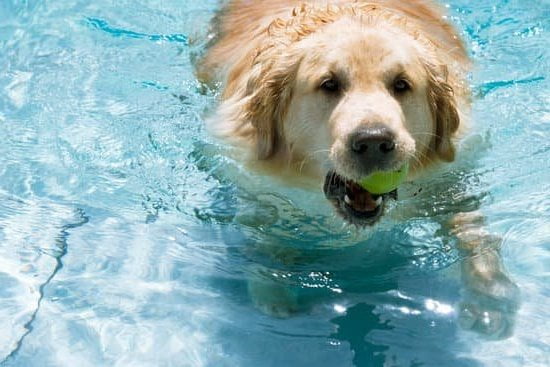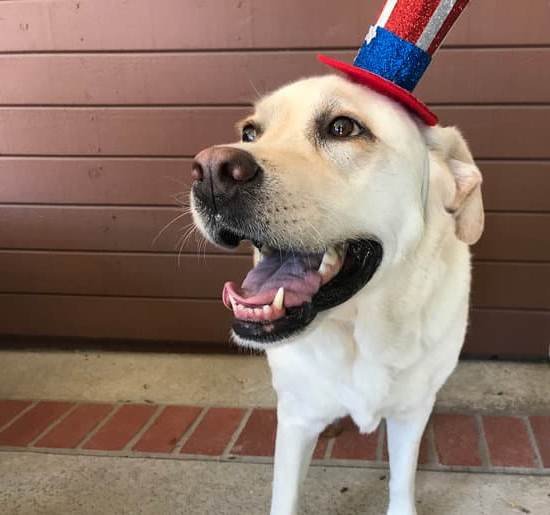Are Schutzhund trained dogs aggressive? This is a common question among dog enthusiasts and potential pet owners. Schutzhund training is a rigorous program that focuses on developing a dog’s skills in protection work, tracking, and obedience. The purpose of this training is to assess and enhance a dog’s natural instincts and abilities, ultimately creating well-balanced and obedient working dogs.
Originating in Germany, Schutzhund training was initially designed for German Shepherd dogs to test their suitability for police or military work. Over time, it has evolved into a popular sport and has been adopted by other breeds as well. The rigorous nature of the training has led to the misconception that Schutzhund trained dogs are inherently aggressive. However, this is not always the case.
Schutzhund trained dogs are known for their intelligence, strength, and loyalty. While they are capable of displaying protective behaviors as part of their training, it does not necessarily translate to aggression towards people or other animals. In fact, proper socialization and training play a crucial role in shaping the behavior of these dogs. Understanding the true nature of Schutzhund trained dogs is essential in dispelling myths about their aggression and promoting responsible ownership.
The History and Origins of Schutzhund Training
In its early days, Schutzhund training focused on testing a dog’s intelligence, agility, courage, and trainability. It also aimed to identify potential breeding stock that possessed these desirable traits. Over time, the training evolved into a sport that not only tests a dog’s working capabilities but also serves as a form of mental and physical stimulation for the animal.
Many misconceptions surround Schutzhund trained dogs due to their protective nature and intense training regimen. While it is true that these dogs are trained for protection work, it is important to understand that Schutzhund dogs are not inherently aggressive animals.
They are carefully trained to exhibit controlled behavior and respond appropriately to specific commands from their handlers. These dogs undergo rigorous socialization and obedience training from an early age to ensure they can discern between real threats and non-threatening situations.
| Key Points | Details |
|---|---|
| Origin of Schutzhund | Developed in Germany in the early 1900s by Max von Stephanitz. |
| Purpose of Training | To assess the suitability of German Shepherds for police work and evaluate their working abilities. |
| Misconceptions | Schutzhund dogs are not inherently aggressive; they undergo rigorous socialization and obedience training. |
Characteristics of Schutzhund Trained Dogs
Schutzhund training is a rigorous and demanding form of training designed to emphasize traits such as courage, loyalty, and intelligence in dogs. As a result, dogs that have undergone Schutzhund training often exhibit certain distinct characteristics. These dogs are known for their high level of obedience and discipline, making them ideal companions for individuals or families looking for a well-behaved pet.
In addition to their obedience, Schutzhund trained dogs also display strong protective instincts. This can manifest as a deep loyalty to their owners and a natural wariness of strangers. While these traits can be seen as intimidating by those unfamiliar with the training, it is important to understand that this behavior is not inherently aggressive. Instead, it reflects the dog’s keen sense of responsibility and desire to protect their loved ones.
Furthermore, Schutzhund trained dogs often have high energy levels and require plenty of physical exercise. They thrive on regular mental stimulation and challenges, making them well-suited for active lifestyles. It’s essential for owners of Schutzhund trained dogs to engage in regular exercise and provide outlets for their dog’s intelligence to prevent boredom or frustration from developing.
| Characteristics | Description |
|---|---|
| Obedience | Schutzhund trained dogs are highly obedient and disciplined. |
| Protective Instincts | These dogs display strong protective instincts towards their owners and family members. |
| High Energy Levels | Schutzhund trained dogs have high energy levels which require regular exercise and mental stimulation. |
Common Misconceptions About Schutzhund Trained Dogs and Aggression
Aggression vs. Protection
One of the most common misconceptions about Schutzhund trained dogs is that they are inherently aggressive. In reality, these dogs are trained to exhibit controlled protection behaviors, rather than unprovoked aggression. Schutzhund training involves teaching dogs to protect their handler and property in a balanced and controlled manner. This means that while these dogs may display protective behaviors, they are not typically aggressive towards people or other animals unless specifically provoked.
Media Portrayal and Public Perception
Unfortunately, media portrayal often perpetuates the misconception that Schutzhund trained dogs are dangerous and aggressive. This has led to public fear and misunderstanding of these working dogs. In reality, when properly trained and socialized, Schutzhund dogs can be well-behaved members of society. It’s important for the public to understand that these dogs are not inherently aggressive, but rather trained to exhibit specific protective behaviors under controlled circumstances.
The Role of Responsible Ownership
It is essential for owners of Schutzhund trained dogs to take responsibility for ensuring proper training and socialization. Without adequate training and handling, any dog, regardless of breed or training background, can display undesirable behaviors. Responsible ownership includes providing ongoing training, socialization, supervision, and management to ensure that the dog behaves appropriately in various situations. By understanding the true nature of Schutzhund training and addressing misconceptions, owners can help promote positive perceptions of these highly skilled working dogs in society.
The Importance of Proper Training and Socialization for Schutzhund Dogs
Schutzhund training is a rigorous and demanding activity that requires dogs to be highly disciplined and obedient. As such, it is vital for owners to understand the importance of proper training and socialization for Schutzhund dogs. This section will delve into why these aspects are crucial for the development of well-rounded Schutzhund trained dogs.
Training
Proper training is essential for all dogs, but even more so for those undergoing Schutzhund training. A well-trained dog not only responds to commands promptly but also understands boundaries and limitations. Training ensures that the dog comprehends when to display protective behaviors and when to remain calm and controlled.
Socialization
Socialization plays a critical role in shaping a Schutzhund dog’s behavior. Exposing the dog to various environments, people, and animals from an early age helps prevent any aggressive tendencies from developing. It teaches the dog how to interact with others in a safe and non-threatening manner.
Behavior Management
Owners of Schutzhund trained dogs must be vigilant in managing their behaviors. Consistent training practices, ongoing socialization, and positive reinforcement can help mitigate any potential aggression that may arise as a result of the intense training regimen. It is crucial for owners to understand that proper management of their dog’s behavior is an ongoing process that requires dedication and patience.
Schutzhund Training and Its Impact on a Dog’s Behavior
Schutzhund training is a rigorous and comprehensive approach to training working dogs for various tasks such as protection, obedience, and tracking. One of the key aspects of this type of training is its impact on a dog’s behavior. Properly trained Schutzhund dogs can exhibit impressive levels of discipline, loyalty, and protective instincts, making them ideal candidates for roles in law enforcement or as personal protection animals.
When considering the impact of Schutzhund training on a dog’s behavior, it’s essential to understand that the primary goal of this type of training is to channel the natural drives and instincts of the dog in a controlled and manageable way. This means that a well-trained Schutzhund dog should not be unnecessarily aggressive or prone to uncontrolled behavior.
Instead, they should display a high level of attentiveness, responsiveness to commands, and an ability to differentiate between genuine threats and non-threatening situations.
To achieve these behavioral outcomes, Schutzhund training utilizes a combination of methods and techniques that focus on building strong bonds between the handler and the dog, fostering clear communication through commands and signals, and providing ample opportunities for socialization in various environments. Additionally, the use of positive reinforcement techniques plays a crucial role in shaping the behavior of Schutzhund trained dogs.
Some important points to consider regarding the impact of Schutzhund training on a dog’s behavior include:
- The emphasis on obedience training helps in developing self-control and impulse management
- Proper socialization ensures that the dog can adapt to different situations without displaying aggression
- Differentiating between protective behaviors and aggressive tendencies through carefully crafted training scenarios
Overall, when conducted correctly with proper guidance from skilled trainers, Schutzhund training can have a positive impact on a dog’s behavior, leading to well-rounded and disciplined animals capable of fulfilling their intended roles effectively.
Understanding the Difference Between Aggression and Protection in Schutzhund Dogs
Schutzhund training is a rigorous and intense regimen that aims to bring out the best in a dog’s protective instincts. It is important to understand that there is a clear distinction between aggression and protection when it comes to Schutzhund dogs.
Protection is an innate characteristic of many dog breeds, and Schutzhund training helps to channel and refine this instinct in a controlled and disciplined manner. In contrast, aggression is an uncontrolled and unpredictable behavior that stems from fear, insecurity, or lack of proper training.
To further clarify these differences, here are some key points to consider:
- Protection in Schutzhund dogs is highly focused and directed towards specific scenarios or individuals, such as intruders or threats to their handlers. This is a result of their training and does not translate into indiscriminate aggressive behavior.
- Aggression, on the other hand, often manifests as unprovoked attacks or hostility towards people or animals without any specific trigger. This type of behavior can be dangerous and unpredictable.
- Proper socialization, obedience training, and consistent reinforcement of commands are essential in distinguishing between protection and aggression in Schutzhund trained dogs. When these elements are lacking, there is a higher likelihood of aggressive tendencies developing.
It is crucial for owners of Schutzhund trained dogs to be aware of these distinctions and take proactive measures to ensure that their pets exhibit controlled protection rather than unbridled aggression. By understanding the difference between these two behaviors, owners can effectively manage their dogs’ actions and foster a safe environment for everyone involved.
Training Methods and Techniques Used in Schutzhund Training
Schutzhund training, also known as IPO training, is a rigorous and disciplined form of training that focuses on developing a dog’s natural instincts for protection. The methods and techniques used in Schutzhund training are designed to channel a dog’s drives and energy into constructive behaviors while promoting obedience, agility, and courage. One of the key elements of Schutzhund training is the use of positive reinforcement, such as rewards and praise, to encourage desired behaviors.
The primary techniques used in Schutzhund training include bite work, tracking, and obedience. Bite work involves teaching the dog to apprehend a “suspect” or “attacker” on command without showing signs of fear or aggression. This technique requires precise control and discipline to ensure that the dog only responds when commanded to do so.
Tracking involves teaching the dog to follow a scent trail with precision and determination. Obedience training focuses on developing a strong bond between the handler and the dog, as well as ensuring that the dog responds promptly and reliably to commands even in highly distracting environments.
It is important to note that these techniques are not intended to instill aggression in the dog but rather to enhance their natural protective instincts in a controlled manner. Properly trained Schutzhund dogs can distinguish between real threats and everyday situations, and they should exhibit self-control at all times. It is essential for trainers to prioritize ethical practices and humane treatment throughout the training process.
Tips for Owners of Schutzhund Trained Dogs on How to Handle and Manage Their Behaviors
In conclusion, it is important for owners of Schutzhund trained dogs to understand the distinction between aggression and protection in their pets. While these dogs are trained to protect and defend, it does not necessarily mean that they are inherently aggressive towards humans or other animals. With proper training, socialization, and ongoing management, Schutzhund dogs can be well-behaved and obedient companions.
Owners should prioritize continued training and reinforcement of commands with their Schutzhund trained dogs. Consistency and positive reinforcement are key in maintaining the desired behaviors instilled through Schutzhund training. It is also essential to provide regular opportunities for exercise, mental stimulation, and socialization to ensure the overall well-being of these highly intelligent and active dogs.
Furthermore, responsible ownership includes educating others about Schutzhund trained dogs and advocating for their misunderstood nature. By being aware of common misconceptions surrounding these breeds, owners can help promote a more accurate understanding of their pet’s behavior. Ultimately, with commitment and dedication from their owners, Schutzhund trained dogs can be exceptional companions that contribute positively to the community.
Frequently Asked Questions
Can Trained Dogs Become Aggressive?
Trained dogs can become aggressive under certain circumstances. This can happen if a dog feels threatened, scared, or is in an unfamiliar environment. Aggression in trained dogs can also be triggered by past traumatic experiences, health issues, or a lack of socialization.
Are Protection Dogs Aggressive?
Protection dogs are not necessarily aggressive by nature, but they are trained to protect their owners and territories. A well-trained protection dog should not display unprovoked aggression, but rather should be obedient and responsive to its handler’s commands.
Proper training and socialization play a key role in ensuring that protection dogs do not exhibit aggressive behavior outside of their protective duties.
What Is the Best Training for an Aggressive Dog?
The best training for an aggressive dog involves identifying the root cause of the aggression and addressing it through positive reinforcement, desensitization techniques, behavior modification, and consistent training methods. It’s important for the trainer to understand the specific triggers for the dog’s aggression and work on redirecting its behavior in a controlled and safe manner.
Seeking professional help from a certified dog trainer or animal behaviorist is highly recommended when dealing with an aggressive dog.

Welcome to the blog! I am a professional dog trainer and have been working with dogs for many years. In this blog, I will be discussing various topics related to dog training, including tips, tricks, and advice. I hope you find this information helpful and informative. Thanks for reading!





